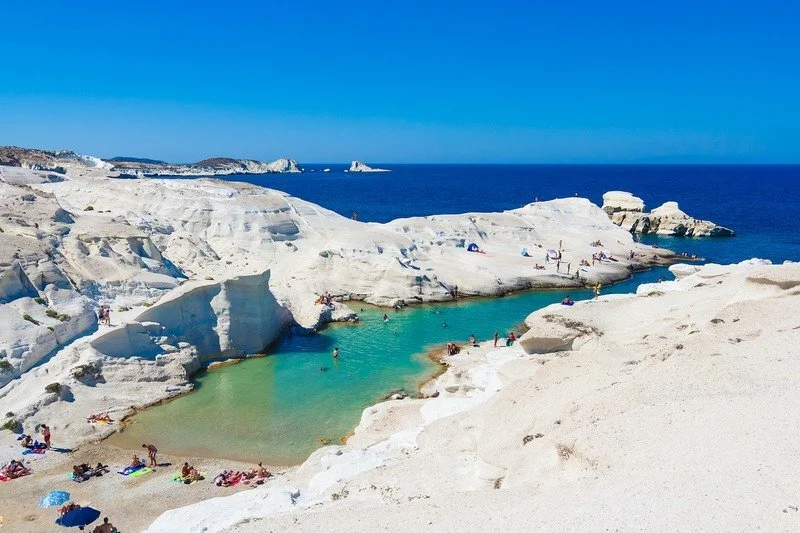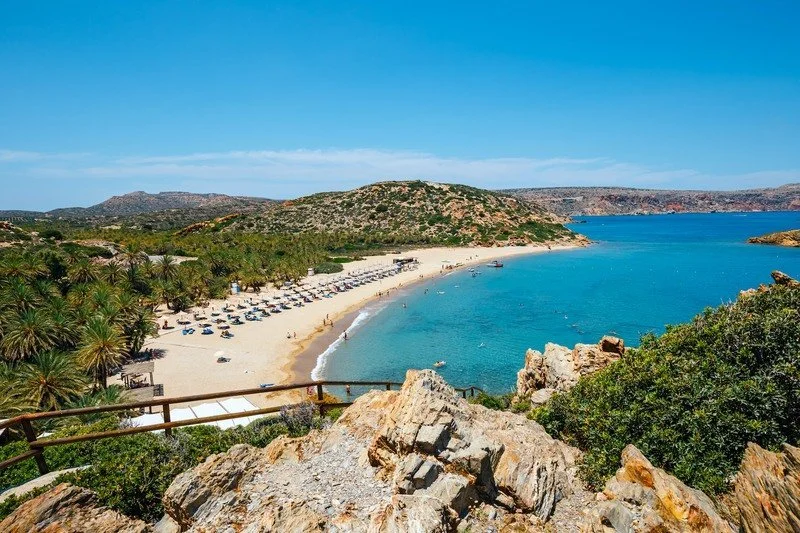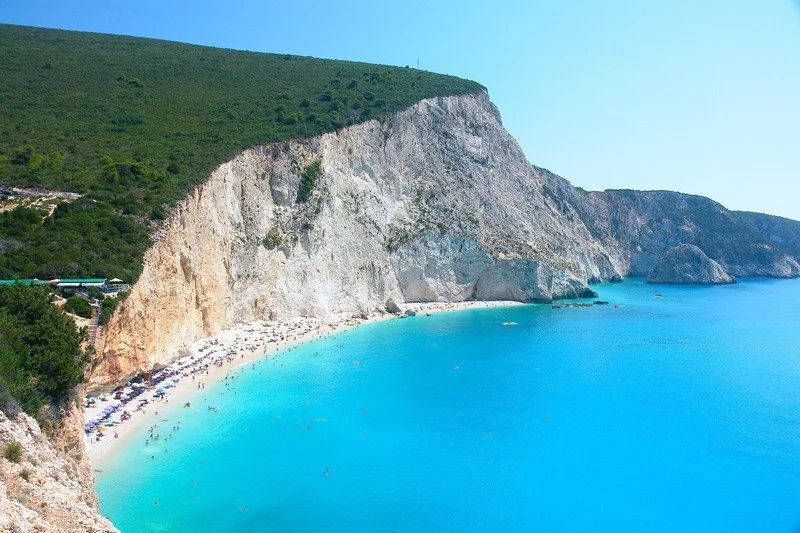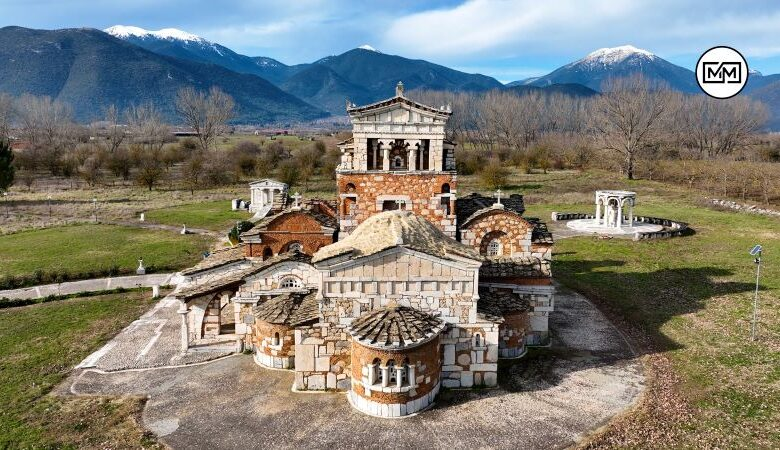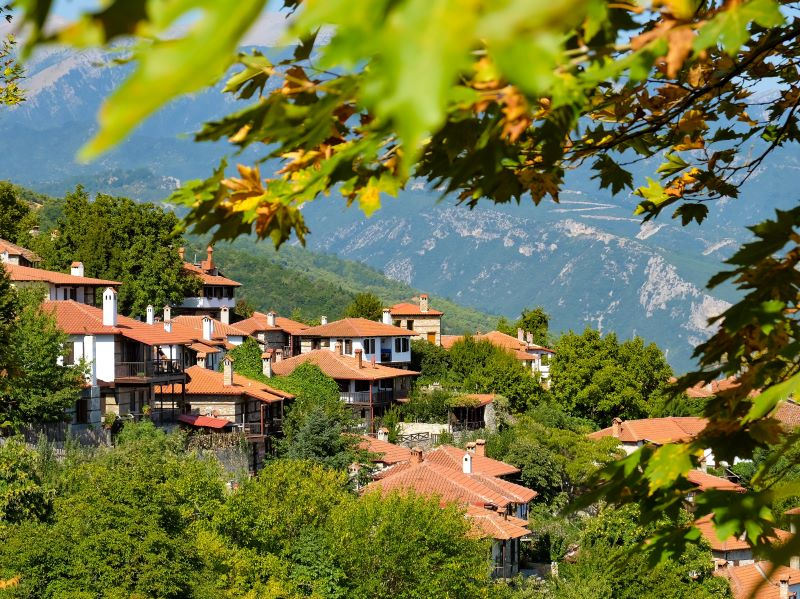Many of us are attracted to Greece because of the long summer days and high-quality selection of beaches.
by Rebecca Hall
GEORGIOS TSICHLIS / SHUTTERSTOCK
Indeed, of the esteemed Blue Flag-awarded beaches in the world, Greece came second only to Spain in 2019.
A Blue Flag is awarded to a beach for cleanliness and facilities such as first aid equipment and restrooms, among others. You’re assured, therefore, an excellent beach vacation when visiting this southern Mediterranean country.
But with so many to choose from, where should you start? My 12-year tenure here has allowed me to explore many. Here, I round up the nine best Greek beaches, chosen for their location, quality of sand, and offering a mixture of everything from “rough and ready” to more luxurious beaches with ease of access.
1. Astir Beach, Vouliagmeni, Athens Riviera
SVEN HANSCHE / SHUTTERSTOCK
Many consider Athens an urban destination, not realizing that in less than 45 minutes by car from the city center, one can reach the glitzy Athenian Riviera along the south coast. Although dotted with several beaches, the Astir Beach and Club is one of the most exclusive. Near the Four Seasons Astir Palace Hotel Athens, the Astir Beach is sandy and a selection of facilities are available, including beach beds and cabanas with bedside waiting service, massage therapists, yoga classes, and gentle water sports such as paddle boarding along with fine dining, award-winning restaurants, and boutique shopping.
As always in Greece, there’s no escaping ancient history; you’ll also find the ruins of the sixth century B.C. Temple of Apollo here. Astir Beach’s pricey entrance fees -- which range from 25 to 40 euros depending on the season -- reflect its exclusivity.
2. Red Beach, Santorini
LUCIAN BOLCA / SHUTTERSTOCK
Due to its volcanic rock, Santorini is not a destination for the ubiquitous gold, sandy beaches. And yet Santorini’s beaches are still a pull for many a visitor, year after year. Black and red volcanic pebbles adorn the shorelines, the most spectacular being Red Beach. A 6.4-mile drive from the port, it’s an unorganized beach, meaning no sunbeds or facilities are available. There’s a parking lot at the top of the cliff and a relatively easy two-minute walk down via path (although this may be challenging for anyone with mobility issues). Note that due to its uniqueness and popularity, it can get very busy in high season. Many, therefore, choose to admire this unique red and black volcanic rock and topography from the headland, or from the many boat trips that leave the port regularly in season.
Lovers of ancient Greek history can combine a trip to Red Beach and the nearby site of Akrotiri, an ancient Minoan settlement discovered in 1866 when soil on the island was being dug to be used to insulate the Suez Canal Bridge.
3. Paraga Beach, Mykonos
AERIAL-MOTION / SHUTTERSTOCK
Mykonos is not only the most popular Greek island -- it has some of the most frequented beaches, too.
Paraga Beach, located only 4.3 miles south of Mykonos Town, is easily accessible by bus or taxi and, of course, car. There are no steep steps to walk down once here, and Paraga is actually two beaches divided by a headland. It’s a mixture of sand and rock. The northern part is lined with many tavernas and bars, so it’s advised to head to the quieter southern part that still offers sunbeds but less of the hustle-bustle. The views reach out as far as other Cycladic islands with great Greek beaches such as Naxos and Paros, and the nearby ancient archeological island of Delos, which makes for an excellent day trip when spending any amount of time on Mykonos. Paraga is known for some of the best sunsets on the island, so stay until dusk.
4. Sarakiniko Beach, Milos
JOSEF SKACEL / SHUTTERSTOCK
Milos, in the Cycladic chain, is another Greek island famous for its rocky and volcanic landscape. There are a number of sandy and rocky beaches that grace its shoreline, but by far the most popular is Sarakiniko, and with good reason: The landscape is made purely of geological material such as eroded volcanic rock, sandstone, and pumice, giving the beach a stark white lunar-looking landscape that’s striking against the blue-green of the Aegean sea.
It’s three miles by car from Plaka, the capital of Milos. Once you reach Sarakiniko, park up at the small parking area and walk down. It’s an easy walk, but Sarakiniko isn’t really a beach to lounge on due to its rocky landscape and lack of facilities. Whilst the young at heart can go cliff diving, many people merely come by car to stroll the cliff tops and photograph this unique area and its surrounding abandoned mining tunnels, and possibly to gain a glimpse of the underwater shipwreck when the waves recede. Take a boat trip from the harbor for an alternative view. Sarakiniko and surrounds are best enjoyed in late spring and early autumn, especially at sunrise and sunset for far-reaching views.
5. Souvlia (Or Delfini) Beach, Paros
At only 76 square miles, although small, the Greek island of Paros offers a good selection of both remote and organized beaches that offer facilities such as tavernas, or at least a cafe where you can get the ubiquitous Greek frappe.
Along with Santorini, Paros is another one of those very popular Greek islands in the height of the summer, hence if you’re after avoiding the crowds, avoid going in August.
There are beaches to escape the madding crowds though, and Souvlia, or Delfini, as the locals call it due to its small beach bar of the same name, is one of them. This beach is a short distance from the main town of Parikia. It’s long with fine sand and pebbles and a seabed that slopes gently. The area is less well-known to tourist crowds, attracting locals and surrounding hotel guests instead. Sunbeds and umbrellas are placed along its shores in high season, and one of Souvlia’s attractions is its location very near to the Asklepion of Asclepius -- a temple dedicated to the God of Healing -- a 15-minute walk from the bus station of Parikia. Why not combine a visit to the temple and the beach?
6. Orkos Beach, Naxos
DAVIDE D'AMICO / SHUTTERSTOCK
While it’s organized with excellent facilities, Plaka is the most popular beach on the Cycladic island of Naxos. It has calm waters and is located on the west side of the island, hence it’s away from the winds that strike in August. Yet neighboring and less-frequented Orkos Beach is also a must-visit.
Orkos is really a continuation of Plaka around the coast and is a collection of small sandy coves. It’s not an organized beach area, meaning there are no facilities such as sunbeds or cafes, but its clear, warm waters and secluded location, nestled amongst red-soiled hills cultivated by locals, have won it accolades. Donkeys in fields and the sugar cube houses so typical of Cycladic architecture give this whole area an extra dash of color and originality.
It’s only seven miles from the Port and capital of Naxos, so driving or the (admittedly sporadic) local bus can get you there.
7. Kaminia Beach, Hydra
AERIAL-MOTION / HTTPS://WWW.SHUTTERSTOCK.COM/
Hydra is a Greek island about an hour away from Athens, famed for having no motor transport (except the one fire truck and one refuse truck). It’s a rocky and hilly island and residents and tourists -- who far outnumber residents in the summer months -- are used to walking the island, or using donkeys or mules to transport goods and/or luggage to the boutique hotels that continue to spring up.
As such, Hydra offers only smooth rocks to swim from or pebbled beaches with green surrounds of the pine clad-hills. To suit all tastes, Kaminia Beach -- half a mile from the island’s capital, Hydra Town -- is the best beach on this unique island. Kaminia itself is actually a tiny fishing village, reached either via a 15- to 20-minute walk along the coast path from the town or by sea taxi. Its clear shallow waters make it a favorite spot for families, and next to the beach is a small harbor where fishing boats gaily bob the day away. Kaminia’s picturesque location -- set against pine forests -- makes it a perfect spot to sit in one of several tavernas or cafes to eat lunch or sip a frappe after a dip.
8. Vai Beach, Crete
DZIEWUL / SHUTTERSTOCK
The largest of the Greek islands, at 3,190 square miles, Crete is a Greek island that has it all: mountainous villages and Mount Ida -- reputed to be the birthplace of Zeus -- and a wide selection of beaches. One of the southernmost Greek islands, almost in the Libyan Sea, Crete maintains an excellent year-round climate with a mean temperature of 68 degrees Fahrenheit in October, for example.
Vai Beach is considered one of the best beaches in Greece not only due to its warm, shallow waters, soft sands, and facilities, such as sun beds and palmed umbrellas, but also because of its historical significance. Surrounded by a 97-square-mile date palm forest with over 5,000 trees, it’s adjacent to the largest known palm tree forest in Europe. This gives Vai its tropical island vibe.
To make the most of a Crete island holiday, I recommend you hire a car to see all it has to offer. Vai is located in the east of the island, 58 miles east of the major fishing town of Agios Nikolaos.
9. Porto Katsiki, Lefkada
YIANNIS PAPADIMITRIOU / SHUTTERSTOCK
We now move onto the Ionian islands along Greece’s west coast. Forget the more touristy islands of Kefalonia and Zakynthos in this chain -- the smaller island of Lefkada is more traditional and less busy. It’s actually linked to the mainland by pontoon bridge, making driving from the Peloponnese or Athens possible, although long at just over five hours.
The Ionian’s appeal is just how blue the waters are due to the limestone cliffs that extend into the sea, and the fact that it sees heavy rainfall in the winter means this island group is incredibly lush and green, contrasting beautifully with the blue waters and multicolored neoclassical style houses.
Your most popular beach by far on Lefkada is Porto Katsiki. Its natural beauty showcases Lefkada to the maximum with ragged white cliffs providing a magnificent backdrop, and lush vegetation covers the surrounding area, creating an idyllic landscape and one that is widely photographed.
Numerous sunbeds and umbrellas cover this famous sandy beach, but the surrounding cliffs offer shaded spots for privacy and relaxing sunbathing.
Lefkada Town, the island’s capital, is 27 miles from Porto Katsiki. Park in the parking lot above the beach and some steps will lead you directly to the beach. It’s not steep, making it accessible to all except those with limited mobility.
Pro Tips
Whether it’s on the mainland or a Greek island, the best way to reach most of the Greek beaches mentioned here is by car (except Hydra). Buses do run, but on “island time,” so if you’re a planner, the sporadic nature of public transport may be irksome.
Note that rental cars -- especially on the islands -- are typically stick shifts, so be prepared for that. There are not many automatics for rent on the islands, so be sure to inquire ahead of time so arrangements can be made.
The far-south island of Crete is good to visit at any time of the year as its temperatures are warm even in the winter (December averages at 63 degrees Fahrenheit).
You don’t necessarily have to swim to enjoy Greece’s beaches, but bear in mind that the height of the summer, particularly July and August, usually sees the islands heaving with tourists. The best times to visit to avoid the crowds are late spring (April/May) or when the seas are warmest, during September and even into October as the sun has had all summer to warm the water.
Source: travelawaits





